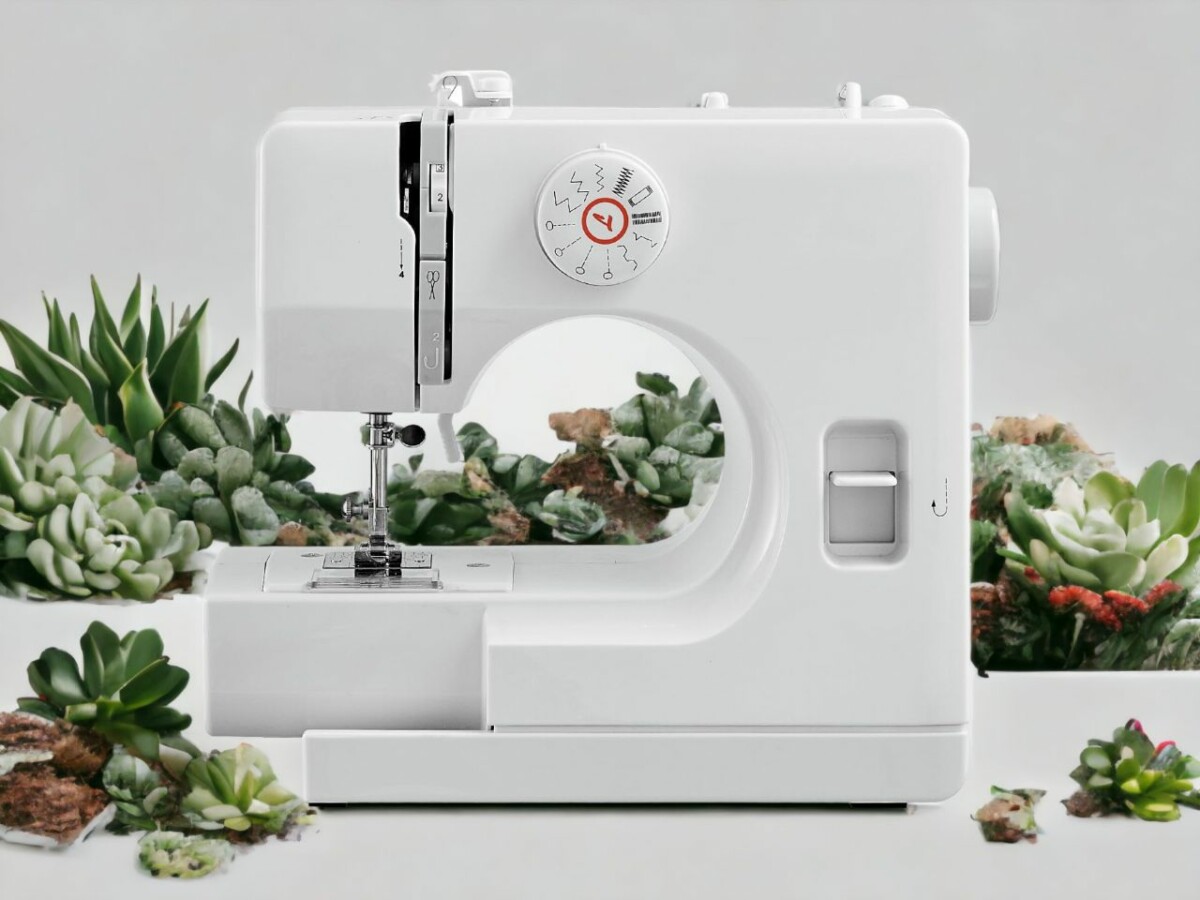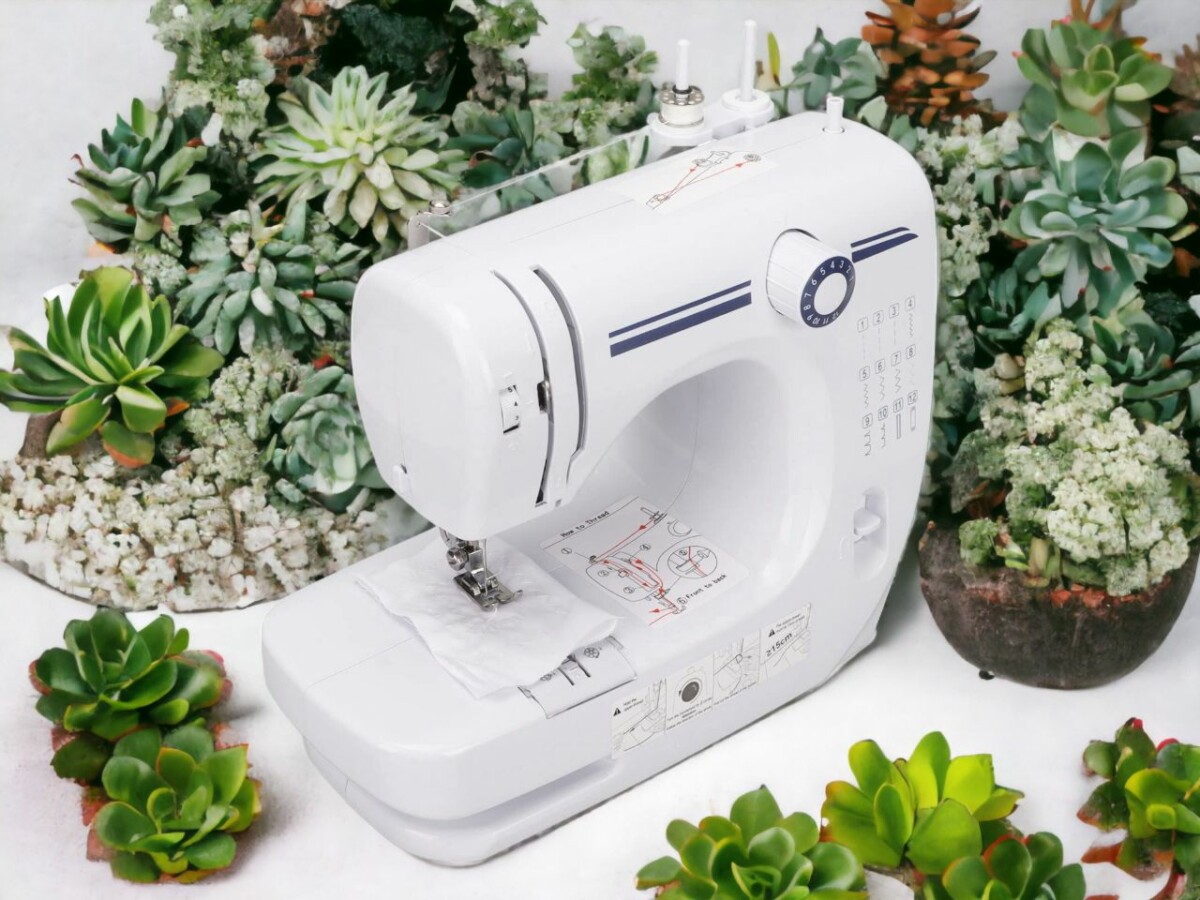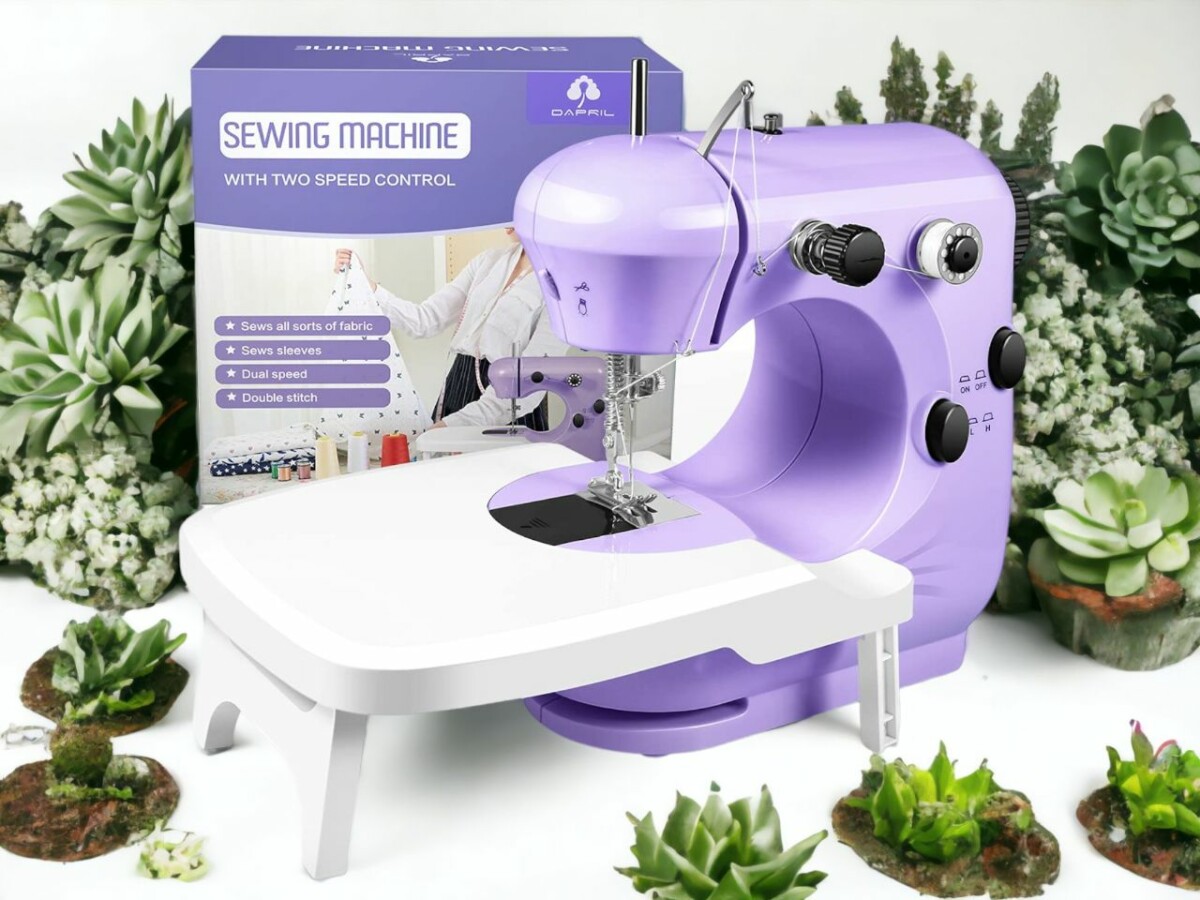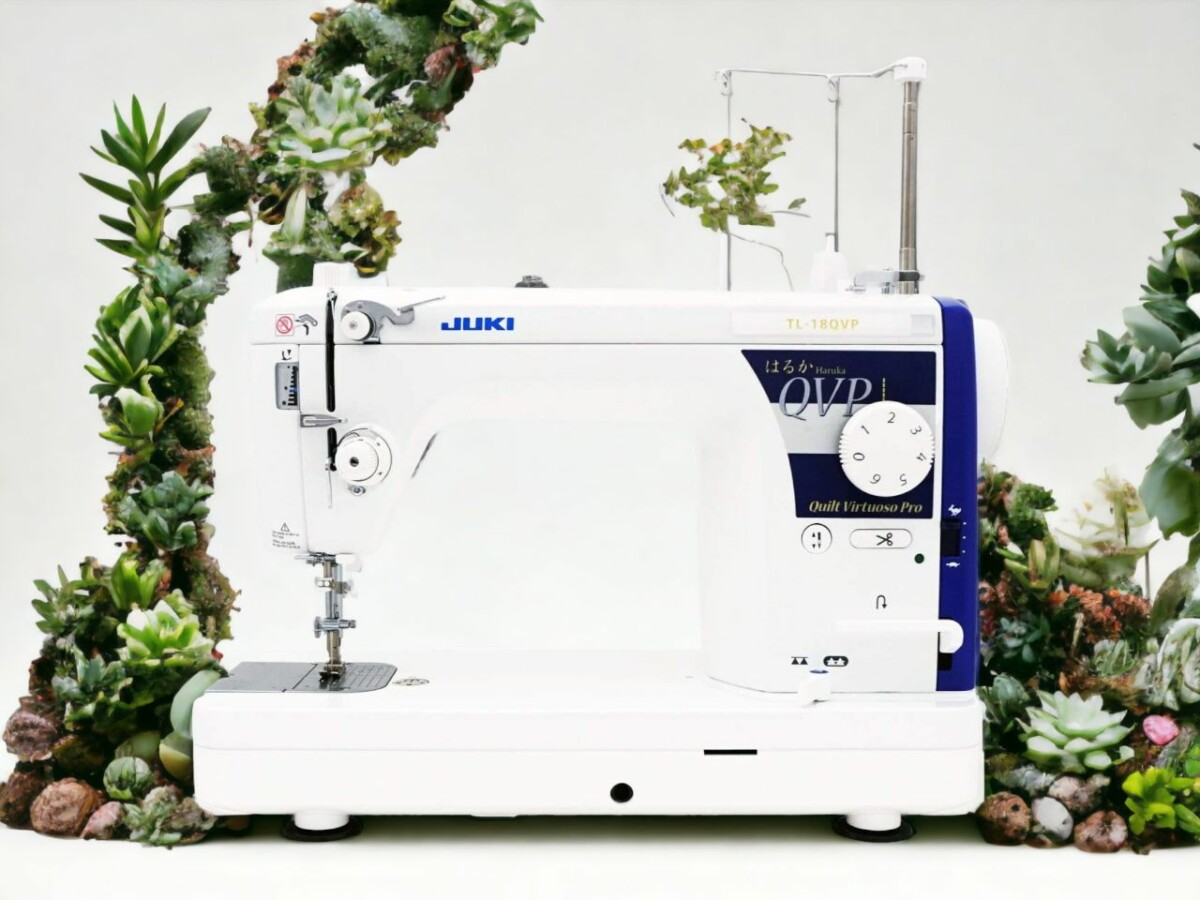You’re all set to embark on your quilting adventure, but there’s a small concern nagging at you – ‘Can my basic sewing machine actually pull this off?’ Well, there’s no need to stress! Your run-of-the-mill sewing machine can absolutely handle quilting.
Small quilts? Piece of cake. Larger quilts might require some minor adjustments and perhaps a bit of extra equipment.
The choice between hand quilting and machine quilting is entirely up to you.
So, let’s dive into the fascinating world of quilting and unlock the hidden potential of your sewing machine!
Can I Use Any Sewing Machine for Quilting?
Although any sewing machine can be used for basic quilting tasks, machines with a larger throat space and features geared towards quilting will make the task easier and more enjoyable. Make sure to have the right accessories, like a walking foot or a free-motion foot, for optimal results.
Alright, let’s break down quilting with a basic sewing machine into five key elements:
- The straight stitch function, which is your MVP for piecing — it’s as simple as that.
- Quilt size, which is more than just a number – it can dictate the need for certain techniques or gear, especially with larger quilts.
- Extra features, like a 1/4′ presser foot, which are like the secret weapon in your arsenal that can make the whole process a breeze.
- The choice between hand and machine quilting, which is a personal call and totally depends on what you’re aiming for with your quilt.
- If you’re trying to make magic happen with a regular sewing machine while on a tight budget, don’t sweat it. There are plenty of machines that won’t break the bank and can still get the job done.
- As for dealing with the usual quilting machine hiccups, they’re usually as basic as adjusting the tension or swapping out the needle. No biggie!
Optimal Sewing Machine Features for Quilting
When it comes to finding the perfect sewing machine for quilting, there’s more to the story than just picking up any all-rounder. Sure, a general-purpose machine might do the trick, but adding some specific features into the mix can make the whole quilting process a breeze.
So, let’s dive into the must-have features you’ll want for a quilting sewing machine:
- Throat Space: Size matters here, folks. The larger the throat space, the better. Why? Because it gives you enough room to work with those bulky, cozy quilts. Aim for at least 9 inches of space – trust me, you’ll thank yourself later.
- Stitch Quality: You want those stitches to be as even and consistent as your morning coffee. Check out the straight and zigzag stitches – they should be on point!
- Feed Dogs: This might sound like a funky term but it’s pretty important. You’ll want these to drop for free-motion quilting. If they don’t, make sure there’s a cover plate on hand.
- Presser Foot Pressure Adjustment: This feature is absolutely clutch for handling different quilt thicknesses. It’s a total game-changer for quilting.
With these handy features, you’ll be quilting like a pro in no time. So go forth and quilt to your heart’s content!
Quilting Techniques for Large-Scale Projects
When it comes to tackling those massive quilting projects, it’s all about getting to grips with the right strategies. Have you thought about the ‘quilt as you go’ technique? It’s basically quilting’s version of breaking a big task into smaller, more manageable chunks. You quilt separate sections of a larger piece and then stitch them all together – pretty genius right? This method is a total game-changer, especially if you’re working with a regular sewing machine.
If you’re more into the old-school way of hand quilting, don’t sleep on the value of quilting frames. These bad boys are crucial for handling the sheer size of larger quilts. They keep your fabric nice and tight, making it way easier to work with.
Whether you’re a hand quilter or more of a machine kind of person, remember to map out your design in advance. This way, you can avoid any unneeded do-overs or stops. Trust me, a little planning goes a long way.
Exploring the Differences Between Hand and Machine Quilting
On the exciting path of quilting, you’ll stumble upon two main techniques – hand quilting and machine quilting. They each have their own individual charm and set of hurdles.
First off, let’s talk about hand quilting.
On the plus side, hand quilting gives your work a unique, crafted-by-hand vibe. It brings a certain depth and texture to your project that a machine just can’t replicate. But on the flip side, it demands a hefty chunk of time and a pretty decent skill set, which, if you’re just starting out, can be a bit of a stumbling block.
Next up is machine quilting.
The perks? It’s a quick and efficient way to get those stitches in place, and with a bit of practice, you can achieve a nice, even stitch rhythm. But it’s not all sunshine and rainbows. Hauling a quilting machine around isn’t exactly a walk in the park, and the initial cost of a decent machine can leave a dent in your wallet.
When it comes down to choosing the best quilting method for your project, you’ve got to weigh up the advantages and disadvantages of hand quilting against machine quilting. Think about the size of your project, what you’re going to use it for, and how much time you’re willing to pour into it.
Tips and Tricks for Successful Quilting on a Sewing Machine
Alright, you’ve scored yourself a decent sewing machine and you’re hyped to jump into quilting. But hold up, there’s some insider info you need to nail before you start.
One major skill you gotta master is free motion quilting. This is when you’re the boss, controlling the stitch length and direction, letting you whip up some seriously cool designs. Definitely give it a whirl on some spare fabric before you tackle your quilt.
Being a pro at handling typical quilting machine hiccups is another must. Say your machine’s acting up, skipping stitches or snapping the thread, just rethread that bad boy. And if your fabric’s getting all crinkly, fiddle with the tension a bit.
And hey, you’ve got to remember, quilting isn’t a race. No need to go full throttle from the get-go! Your sewing machine’s a pretty rad tool, so get to know it and let it do the hard yards for you.
Wrapping it up: The Secrets of Quilting with Sewing Machines Uncovered
Alright, you’ve hung around long enough, and now, it’s time to spill the tea. Truly, the world of sewing is such a rabbit hole, and the deeper you delve, the more wonders you discover. Every angle from using hand quilting thread in a sewing machine to utilizing nylon thread, sheds a new glow on the versatile capabilities of sewing machines. Seriously, it’s kinda like uncovering a hidden level in a video game.
But hey, we are tooling around in the realm of sewing, not gaming, right? Well, whichever the case, the point is that you need to skillfully navigate to ensure you’re befittingly equipped. No offense, but it’s not a case of ‘one size fits all.’ Every sewing machine has its unique charms, kind of like the avatars you choose for different video games.
And let’s address this wild rumor that’s been swimming around—can your sewing machine actually affect your pregnancy? Seriously, who cooked up this theory? Sewing machines don’t emit any dangerous radiation or anything. But hey, we are not doctors, so it’s better to always follow expert health advice. Anyways, you gotta admit, it’s a fascinating realm we’re exploring here!
So, there it is, folks! Remember, quilting is not just a skill, it’s an art. So, arm yourself with the right tools, threads, and a load of creativity. And of course, a specialized sewing machine wouldn’t hurt either!
Sewing is definitely one of my biggest hobbies. I’ve been doing it since i was young, thanks to my mother. I specialize in sewing, and that’s what i mostly write about.






